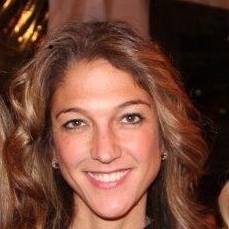
Banner

Jewish philanthropy: keep it young, hip & sexy
VANESSA VALKIN
This week I attended the Chabad Miracle Drive, which is one of the biggest fundraisers on the South African Jewish calendar. Its success is less the cause (although a worthy one) and more the driving force behind it: the indefatigable Rabbi David Masinter.
Next week I will be addressing the National Executive Committee of the Union of Jewish Women (UJW), an 85-year-old organisation that does important outreach work both here and in Israel.
The president of UJW has asked me to talk about, inter alia, ideas for engaging younger volunteers and lay leaders. This dilemma is one that many Jewish organisations face today: how to engage young members and generally increase the appeal of involvement with or without a Rabbi Masinter.
Overseas communities offer some good lessons. The United Jewish Appeal (UJA) Federation of New York is a great example. They have a division for Emerging Leaders which sells itself as offering “young and successful philanthropic individuals and couples the opportunity to participate in the incredible global endeavour of renewing and strengthening the Jewish community in New York and around the world”.
Within it, the Generosity Division for under-30s, hosts an annual sold-out event at a very hip venue like an art museum or the beautiful downtown Puck Building with an organising committee made up of dynamic, connected and well-heeled young professionals. The event generates plenty of ‘buzz’ on social-networking sites and by word of mouth.
Members of Generosity are also invited to be part of an exclusive Six Points Society that offers members the chance to participate in intimate briefings with top industry executives from the fields of finance, fashion, entertainment, media, sports, and more. Emerging Leaders also offers the chance to join Young Healthcare or Young Wall Street for events, lectures or volunteering opportunities.
What has the UJA Federation of New York realised? Young people are looking for potential mates and to be exposed to career development opportunities. The best way to engage them is to create content that’s consistent with this critical path. Attending these events, being on committees with other likeminded, successful young people and being exposed to mentors in their given fields of work, becomes desirable as opposed to a call of duty.
In the UK, the One to One Children’s Fund has a Young Professionals Network (YPN) that has “Pay-2-Stay” Saturday night dinner parties where volunteer hosts invite lots of friends and each guest donates to the charity an amount they would otherwise spend on a fun night out in London, which can easily be a few hundred pounds. The YPN also holds a football tournament where entry fees and sponsorship costs are donated.
Locally in South Africa, there are Jewish organisations doing a formidable job too. ORT has engaged high-flying, younger donors by enticing them to participate in competitive sporting events like the Paris and Jerusalem Marathons. Although the sporting events do not always raise a lot of rands in and of themselves, they engage a group of younger people who are somewhere in the lifeline of raising their families and making money and once engaged will likely be donors in the future.
The King David Foundation has done very well at creating a high-powered young board that sets a great example for their alma mater of giving back to their school and attracts other successful people to take on leadership positions.
YAD, the Young Adult’s Division, of Cape Town’s UJC, is another example. This non-profit hosts not-to-be-missed breakfasts for young professionals with business icons. For the slightly older demographic – young mothers for example – there are fun girls’ nights that offer a tiny escape from parenting and homemaking. The organising committees are well-connected in the community and use the Internet and peer pressure to ensure proper follow-up.
In Australia, the Observership Programme offers talented young people an internship experience on a non-profit board. The selected individuals, called “Observers”, are trained and paired with an organisation for a year and attend all board meetings, learn about the principles and functions of a non-profit board, the roles of its members, the fiscal processes and other governance priorities.
The programme offers the advantages of training and mentorship, networking with board members and the chance to build one’s résumé. The benefit for the non-profit is that afterwards, the Observers usually stay involved.
Lessons
To bring in the next generation is to give them something valuable in exchange for their support. Brand the organisation as young, hip and cool; use Facebook and Twitter; host cool exciting events; and get notable, young people involved who will attract others like themselves. Offer young people a chance to network, build their careers or find their future partner.
We know that giving back is one of the most enriching and rewarding experiences. But our young people won’t know this until they try it, so bring them in with things they need and want. It’s a win-win situation.





Judith Yacov
March 1, 2015 at 11:12 am
‘Great ideas that will really take off!
‘
Viv
March 1, 2015 at 12:32 pm
‘The UJW is irrelevant, that”s why they can’t get anyone under 60 to join their ranks. Time to know when enough is enough.’